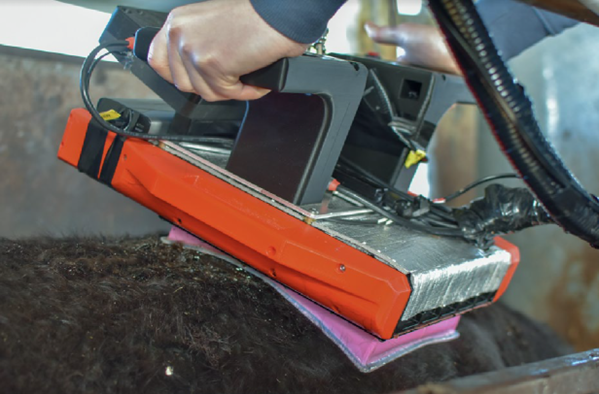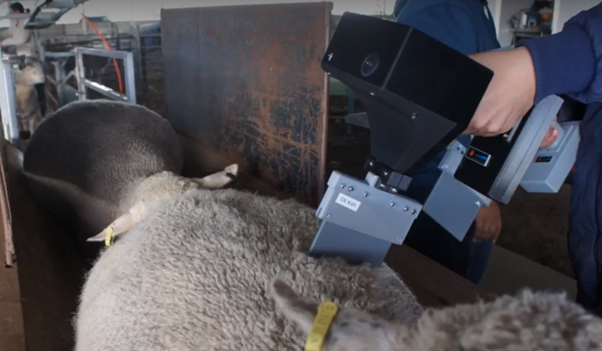Live Animal Objective Measurement
Overview

The MLA Objective Measurement program has historically had a significant focus on developing technologies for carcase measurement for two key reasons. The first being due to the scale benefits of implementing technology at a processing site. The second is that developing technologies to objectively measure carcases has been a simpler proposition as carcases are inherently more uniform and still than a live animal.
The need to accelerate the development of live animal objective measures was identified following the successful OM carcase early adoption open call that was facilitated by the OM program. In November-December 2022, an MDC Open Call requesting expressions of interest from technology providers and producers was released which attracted greater than ten technology EOI proposals across a range of OM live technologies at various stages of development and validation. Five projects have been contracted which are assessing and developing 4 different live animal OM technologies across 5 different supply chains with a number more technologies and interested partners being assessed.
These projects will form part of an overall engagement to accelerate prototyping and commercialisation plans between supply chains and the various providers. It would be expected that other red meat value chains who have similar production workflows will see the value outlined in these projects and want to adopt live animal measures. The primary benefit is expected to be that data captured using objective measurements from live animals can contribute to “whole of life” validation and used to create additional value through carcase compliance.

Each project was required to consider and design a program of work around the following:
- Integration of the selected technology into farm and/or feedlots and their supply chain business workflows and business data management systems, including feedback to producers
- How the technology will reduce cost of production, improve carcase value or deliver benefits that may be applied to production, procurement and marketing decision making
- Whole of life animal data capture and sharing to create additional supply chain value
- Proposals would need to consider animal ethics requirements
- Proposals should focus use-cases in beef, sheepmeat or goat supply chains
- At which point in the supply chain will the technology be utilised? On-farm, feedlot or at entry to processing. Whichever is the target application point, timely output of data including data management systems for real-time data-to-decisions outputs and knowledge for commercial application should be considered.
- Providers able to demonstrate potential for sharing data on live animal and carcase measurements will be favourably considered
- Data captured using objective measurements from live animals can contribute to “whole of life” validation and used to create additional value through carcase compliance.
- All projects will require a comprehensive Final Report that captures the lessons learnt, including challenges encountered and solutions identified to improve opportunities for future adopters.
This expression of interest sought collaborators to drive the development, evaluation and adoption of objective measurement solutions and enhance data driven decisions, to improve productivity, sustainability and profitability across Australian red meat supply chains.
These themes are aligned with the red meat industry’s strategic priority of doubling the value of Australian red meat by 2030, including but not limited to:
- Objective measurement & data driven decisions
- Producer feedback & improving value-based transactions
- Digitalisation – enabling the power of data
- Automation – efficient processes
- New and innovative technologies that could advance the Australian red meat industry and deliver enhanced commercial outcomes
The individual use case value propositions for beef, sheep and goat supply chains include, but are not limited to:
- Prediction of turn-off potential
- Finished end point (weight & fatness)
- Carcase yield and eating quality (carcase value)
- Quality or value differentiation of co-products
- Animal health or welfare traits
- New or improved measurement of attributes to improve genetic selection for carcase value
- Measurement of marbling while optimising turn-off times
- Measurement of lean meat yield (LMY) for on-farm and feedlot management, turn-off and marketing decisions
- Improving on-farm and feedlot livestock management decisions
The primary benefit is expected to be that data captured using objective measurements from live animals can contribute to “whole of life” validation and used to create additional value through carcase compliance.
|
Project title |
Project Code |
Objective |
Date published |
|
Image and sensor technologies to categorise mobility in beef cattle |
P.PSH.1424 |
This project aims to examine if camera-based motion capture and image processing, combined with body-worn sensors can be used to define new objective measures of structural soundness in beef cattle. If successful, this project will enable more efficient selection for structurally sound and healthier animals that remain in the herd longer, leading to a more sustainable and profitable beef cattle breeding programs. |
In Progress |
|
Application of Marbl™ to Live Cattle IMF Measurement - Proof of Concept |
P.PSH.1449 |
The overall objective of the project is to design, build and test a pre-commercial proof of concept Marbl™ sensor system for the purpose of obtaining cattle intra-muscular fat (IMF) data. |
In Progress |
|
Development and evaluation of carcase traits measurement on live animals for beef processing |
P.PSH.1462 |
The overall objective of the project is to deliver an early adoption and evaluation of the MEQ Live device to measure beef cattle surface measures including marbling, rib fat and EMA. This project aims to deploy, commission and evaluate the MEQ Live system to measure cattle IMF and comparison to marble scores in corresponding beef carcases. This will drive producer engagement with brand specifications and improve genetic gain. |
In Progress |
|
Evaluating objective measurement using MEQ Live to measure marbling in live animals in a beef feedlot |
P.PSH.1464 |
The overall objective of the project is to evaluate performance traits on live animals using objective measurement at a beef feedlot to deliver a comprehensive live animal trait data-set to develop a sortation solution using the MEQ Live solution. This project aims to deploy, commission and evaluate the MEQ Live system to measure cattle IMF and comparison to marble scores in corresponding beef carcases. This will drive producer engagement with brand specifications and improve genetic gain. |
In Progress |
|
Design a proof-of-concept 3D-Metrix camera-based solution for live animal measurement in beef feedlots (Phase 1 |
P.PSH.1471 |
The overall objective of this project is to develop the proof-of-concept design for a fully integrated solution based on 3D-Metrix’s suite of systems and capabilities for the objective measurement of live animal performance and carcase traits. This solution includes linking and accumulating data for the life of the animal through to carcase enabling timely and better informed management and utilisation decisions. |
In Progress |


